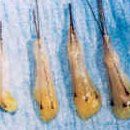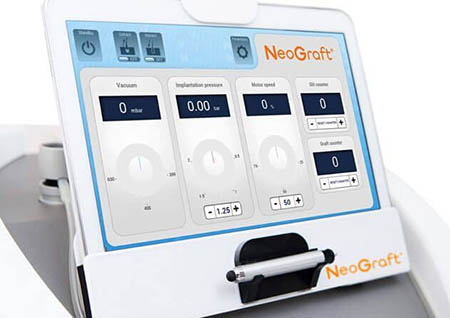WHAT IS A HAIR TRANSPLANT
All About Hair Transplants
Follicular Units
Follicular Units And Why They Are Important
Histologists, who study human tissue, have long recognized that human hair grows in tiny bundles known as follicular units. However, physicians performing hair restoration surgery have largely ignored the existence of follicular units until recently.

Upon closer examination, trimmed scalp hair reveals that it grows in small “bundles” of 1, 2, 3, occasionally 4, and rarely 5 hairs per bundle.
These hairs, along with their accompanying support system (sebaceous glands, erector pilae muscle, etc.), collectively form what is now known as the “Follicular Unit.” Typically, these 1-5 hair bundles emerge from the scalp through a single pore.
Under a powerful microscope, these Follicular Units are distinct anatomical entities, individually wrapped by a layer of connective tissue. Therefore, preserving the follicular unit intact is essential for ensuring maximum growth.
Moreover, in addition to the full terminal hairs, the follicular unit comprises 1-2 fine vellus hairs, sebaceous (oil) glands, a small muscle, tiny nerves and blood vessels, and a fine band of collagen that surrounds the unit (known as the perifolliculum).

Furthermore, in areas of the scalp affected by genetic balding, the healthy terminal hairs are gradually replaced by hairs of smaller diameter and length referred to as “miniaturized” hairs.
Both FUT and FUE hair transplants necessitate the precise dissection of each Follicular Unit, ensuring the integrity of all its elements. This meticulous approach guarantees optimal survival and growth of the hair, resulting in transplanted follicular units that are indistinguishable from naturally occurring ones.
By utilizing nature’s own building blocks for hair transplantation through follicular unit hair transplantation, consistently good and natural results are achieved.
FUT and FUE hair transplants
Follicular Unit Transplant (FUT)
The FUT hair transplant method, commonly referred to as follicular unit transplantation or the ‘strip method’, is widely used around the world and generally offers excellent patient outcomes with high hair retention and regrowth rates. It is the world’s most common hair transplant procedure.
Follicular Unit Extraction (FUE)
Follicular unit extraction (FUE), sometimes known as follicular transfer (FT), represents one of two primary methods for obtaining follicular units, which are naturally occurring groups of one to four hairs, for hair transplantation. FUE hair transplant techniques enjoy popularity in the United States and globally.
Robotic Hair Transplants
ARTAS™ Robotic Hair Transplantation

The Most Advanced Technology in Hair Transplant Surgery
Hair Restoration Centers proudly offer ARTAS® Robotic Assisted Follicular Unit Extraction (FUE), the most advanced technology in hair transplant surgery.
Utilizing a small device, the ARTAS System removes follicular units without leaving a visible strip or requiring stitches. It employs sophisticated imaging technology to map and select the best grafts for your procedure, guided by a specially trained surgeon.
During the procedure, grafts are harvested and placed at recipient sites in one session, minimizing downtime. Surgery typically takes between four and eight hours, with results appearing gradually over several months.
Furthermore, ARTAS offers precise graft harvesting, improved survival rates, and effective restoration for both male and female pattern hair loss. However, it’s essential to note that while the procedure is FDA-approved for those with light skin and dark hair, not all patients may be suitable candidates.
NeoGraft Hair Transplantation

There exist several hair transplant methods, which have evolved over time to yield improved results. Among the most popular are Follicular Unit Extraction (FUE) and Follicular Unit Transplant (FUT). Another noteworthy advancement in hair transplantation is NeoGraft, a refined version of FUE that has FDA approval.
NeoGraft utilizes a semi-automated device to gather and harvest hair follicles, which are then precisely implanted into recipient areas.
Moreover, this method enhances the accuracy and efficiency of follicular unit extraction, resulting in rapid recovery and minimal invasiveness compared to traditional methods.
Additionally, unlike manual extraction, NeoGraft’s automated approach ensures exceptional precision and speed, yielding superior outcomes.
Suitable for those experiencing genetic hair loss, NeoGraft offers a less invasive alternative with faster recovery times and successful results.
In conclusion, while individual outcomes may vary, patients typically observe hair growth within 3 to 6 months following the procedure, following proper post-operative care and consultation with their surgeon.
